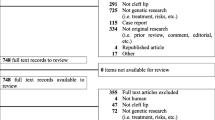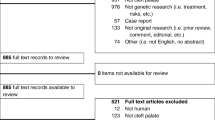Abstract
Background
Potential target genes of microRNA (miR)-494 have been reported in many types of cancers. However, the role of miR-494 in esophageal squamous cell carcinoma (ESCC) remains unknown.
Aim
This study focused on the expression and biological function of miR-494 in ESCC.
Methods
Using bioinformatics analyses, we found that cleft lip and palate transmembrane 1-like (CLPTM1L) was a potential target of miR-494. We performed quantitative real-time (qRT) PCR assays in 37 ESCC tumor tissues to determine the expression of miR-494 and CLPTM1L mRNA, and we analyzed the correlation between both of these factors and clinical characteristics. The cell counting kit-8 and colony formation assays were used to evaluate the effects of miR-494 expression on the proliferation of ESCC cells. The transwell migration assay and flow cytometric apoptosis assay were performed to study the influence of miR-494 on the invasion and apoptosis of ESCC cells. Western blotting, luciferase assays, and CLPTM1L knockdown experiments were used to determine whether CLPTM1L was a target of miR-494.
Results
The qRT-PCR assays showed significant downregulation of miR-494 (P < 0.05) and upregulation of CLPTM1L mRNA (P < 0.05), both of which were significantly associated with lymph node metastases (P < 0.05). High expression of miR-494 inhibited cell proliferation and invasion and promoted cell apoptosis (P < 0.05). The results also showed that CLPTM1L was a target of miR-494.
Conclusion
These results show that the expression of miR-494, which can regulate cell growth, invasion and apoptosis of ESCC cells by targeting CLPTM1L, is downregulated in ESCC tumor tissues. The miR-494–CLPTM1L pathway could be further exploited to develop a new approach to treat ESCC.






Similar content being viewed by others
References
Coleman HG, Bhat S, Murray LJ, et al. Increasing incidence of Barrett’s oesophagus: a population-based study. Eur J Epidemiol. 2011;26:739–745.
Umar SB, Fleischer DE. Esophageal cancer: epidemiology, pathogenesis and prevention. Nat Clin Pract Gastroenterol Hepatol. 2008;5:517–526.
Zhang Y. Epidemiology of esophageal cancer. World J Gastroenterol. 2013;14:5598–5606.
Ward MH, Cross AJ, Abnet CC, et al. Heme iron from meat and risk of adenocarcinoma of the esophagus and stomach. Eur J Cancer Prev. 2012;21:134–138.
Cross AJ, Freedman ND, Ren J, et al. Meat consumption and risk of esophageal and gastric cancer in a large prospective study. Am J Gastroenterol. 2011;106:432–442.
Zhu X, Ding M, Yu ML, et al. Identification of galectin-7 as a potential biomarker for esophageal squamous cell carcinoma by proteomic analysis. BMC Cancer. 2010;10:290.
Zhou ZQ, Cao WH, Xie JJ, et al. Expression and prognostic significance of THBS1, Cyr61 and CTGF in esophageal squamous cell carcinoma. BMC Cancer. 2009;9:291.
Lee RC, Feinbaum RL, Ambros V. The C. elegans heterochronic gene lin-4 encodes small RNAs with antisense complementarity to lin-14. Cell. 1993;75:843–854.
Ambros V. The functions of animal microRNAs. Nature. 2004;431:350–355.
Hobert O. Gene regulation by transcription factors and microRNAs. Science. 2008;319:1785–1786.
Meister G. miRNAs get an early start on translational silencing. Cell. 2007;131:25–28.
Farazi TA, Spitzer JI, Morozov P, et al. miRNAs in human cancer. J Pathol. 2011;223:102–115.
Zhang Q, Sun H, Jiang Y, et al. MicroRNA-181a suppresses mouse granulosa cell proliferation by targeting activin receptor IIA. PLoS One. 2013;8:e59667.
Huang Y, Zou Q, Song H, et al. A study of miRNAs targets prediction and experimental validation. Protein Cell. 2010;1:979–986.
Wang C, Lu S, Jiang J, et al. Hsa-microRNA-101 suppresses migration and invasion by targeting Rac1 in thyroid cancer cells. Oncol Lett. 2014;8:1815–1821.
Lei SL, Zhao H, Yao HL, et al. Regulatory roles of microRNA-708 and microRNA-31 in proliferation, apoptosis and invasion of colorectal cancer cells. Oncol Lett. 2014;8:1768–1774.
Takamizawa J, Konishi H, Yanagisawa K, et al. Reduced expression of the let-7 microRNAs in human lung cancers in association with shortened postoperative survival. Cancer Res. 2004;64:3753–3756.
Shen PF, Chen XQ, Liao YC, et al. MicroRNA-494-3p targets CXCR4 to suppress the proliferation, invasion, and migration of prostate cancer. Prostate. 2014;74:756–767.
He W, Li Y, Chen X, et al. miR-494 acts as an anti-oncogene in gastric carcinoma by targeting c-myc. J Gastroenterol Hepatol. 2014;29:1427–1434.
Romano G, Acunzo M, Garofalo M, et al. miR-494 is regulated by ERK1/2 and modulates TRAIL-induced apoptosis in non-small-cell lung cancer through BIM down-regulation. Proc Natl Acad Sci USA. 2012;109:16570–16575.
Guo Y, Chen Z, Zhang L, et al. Distinctive microRNA profiles relating to patient survival in esophageal squamous cell carcinoma. Cancer Res. 2008;68:26–33.
Wang Z, Qiao Q, Chen M, et al. miR-625 down-regulation promotes proliferation and invasion in esophageal cancer by targeting Sox2. FEBS Lett. 2014;588:915–921.
Ogawa R, Ishiguro H, Kuwabara Y, et al. Expression profiling of micro-RNAs in human esophageal squamous cell carcinoma using RT-PCR. Med Mol Morphol. 2009;42:102–109.
Akagi I, Miyashita M, Ishibashi O, et al. Relationship between altered expression levels of MIR21, MIR143, MIR145, and MIR205 and clinicopathologic features of esophageal squamous cell carcinoma. Dis Esophagus. 2011;24:523–530.
Hummel R, Hussey DJ, Michael MZ, et al. miRNAs and their association with locoregional staging and survival following surgery for esophageal carcinoma. Ann Surg Oncol. 2011;18:253–260.
Prescott J, Wentzensen IM, Savage SA, et al. Epidemiologic evidence for a role of telomere dysfunction in cancer etiology. Mutat Res. 2012;730:75–84.
Rafnar T, Sulem P, Stacey SN, et al. Sequence variants at the TERT-CLPTM1L locus associate with many cancer types. Nat Genet. 2009;41:221–227.
Yamamoto K, Okamoto A, Isonishi S, et al. A novel gene, CRR9, which was up-regulated in CDDP-resistant ovarian tumor cell line, was associated with apoptosis. Biochem Biophys Res Commun. 2001;280:1148–1154.
Lu X, Ke J, Luo X, et al. The SNP rs402710 in 5p15.33 is associated with lung cancer risk: a replication study in Chinese population and a meta-analysis. PLoS One. 2013;8:e76252.
James MA, Wen W, Wang Y, et al. Functional characterization of CLPTM1L as a lung cancer risk candidate gene in the 5p15.33 locus. PLoS One. 2012;7:e36116.
Petersen Gloria M, Amundadottir Laufey, Fuchs Charles S, et al. A genome-wide association study identifies pancreatic cancer susceptibility loci on chromosomes 13q22.1, 1q32.1 and 5p15.33. Nat Genet. 2010;42:224–228.
Acknowledgments
This study was supported by the National Natural Science Foundation of China (No. 81272188 and No. 81301726).
Conflict of interest
None.
Author information
Authors and Affiliations
Corresponding author
Rights and permissions
About this article
Cite this article
Zhang, R., Chen, X., Zhang, S. et al. Upregulation of miR-494 Inhibits Cell Growth and Invasion and Induces Cell Apoptosis by Targeting Cleft Lip and Palate Transmembrane 1-Like in Esophageal Squamous Cell Carcinoma. Dig Dis Sci 60, 1247–1255 (2015). https://doi.org/10.1007/s10620-014-3433-7
Received:
Accepted:
Published:
Issue Date:
DOI: https://doi.org/10.1007/s10620-014-3433-7




